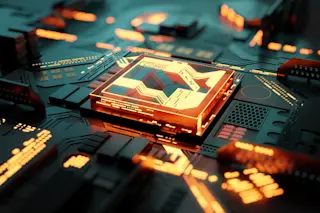What's the News: Lytro, a Silicon Valley start-up, has designed a camera that lets you shoot first and focus later. The camera captures the far more light and data than traditional models, and comes with software that lets you focus the photo, shift perspective, or go 3D after you've taken the photo. The company plans to sell a consumer, fits-in-your-pocket model by the end of the year. How the Heck:
Lytro's camera captures the light field, all the light traveling every direction through every point in a scene. Light-field cameras records data---such as direction, color, and intensity---about each individual ray of light. (Typical digital cameras, on the other hand, also take in information on color, instensity, and---to some extent---direction, but they essentially sum up light in a scene and record the total rather than tallying the information for each ray of light.) To do this, the camera has an array of microlenses behind the main lens, which help break up the light coming in into its component rays.
As Lytro CEO Ren Ng told the Wall Street Journal, it's akin to recording each musician in a band on a different track and mixing the tracks later, rather than recording all the musicians playing at once.
This technique has none of the shutter lag of point-and-shoot cameras, which have a fractions-of-a-second delay between hitting the button and taking the photo as the camera focuses.
The image is then fed into a software program, which turns that mass of light field data into an interactive image, which Lytro calls a "living picture." With so much data at their cursor-tip, the photographer---and the viewer---can change the focus of the shot with a simple click. Users can also alter the perspective of the shot, since the image contains information about the lights' direction, and even make the 2D image into a 3D one, which can be viewed on a computer screen with the help of 3D glasses.
To get a feel for how the photos will work, you can try out the interactive image above, or check out the full gallery on Lytro's website.
What's the Context:
Light-field photography has been around for a while; Ng himself has been working on the technology for eight years, and Lytro is his second start-up based on it.
Most earlier forays into the technology, required scores of cameras and serious processing power---not the sort of thing a consumer could carry around, much less slip into their pocket.
Not So Fast:
Stephen Shankland at CNET brings up some potential hiccups. Lytro will have to prove it can match the resolution of other cameras; using software to focus your photo lacks the point, shoot, upload-to-Facebook immediacy of, say, smartphone photography; and the living pictures currently run on Flash, turning them into still photos for iPad users, for instance.
Image: Lytro













